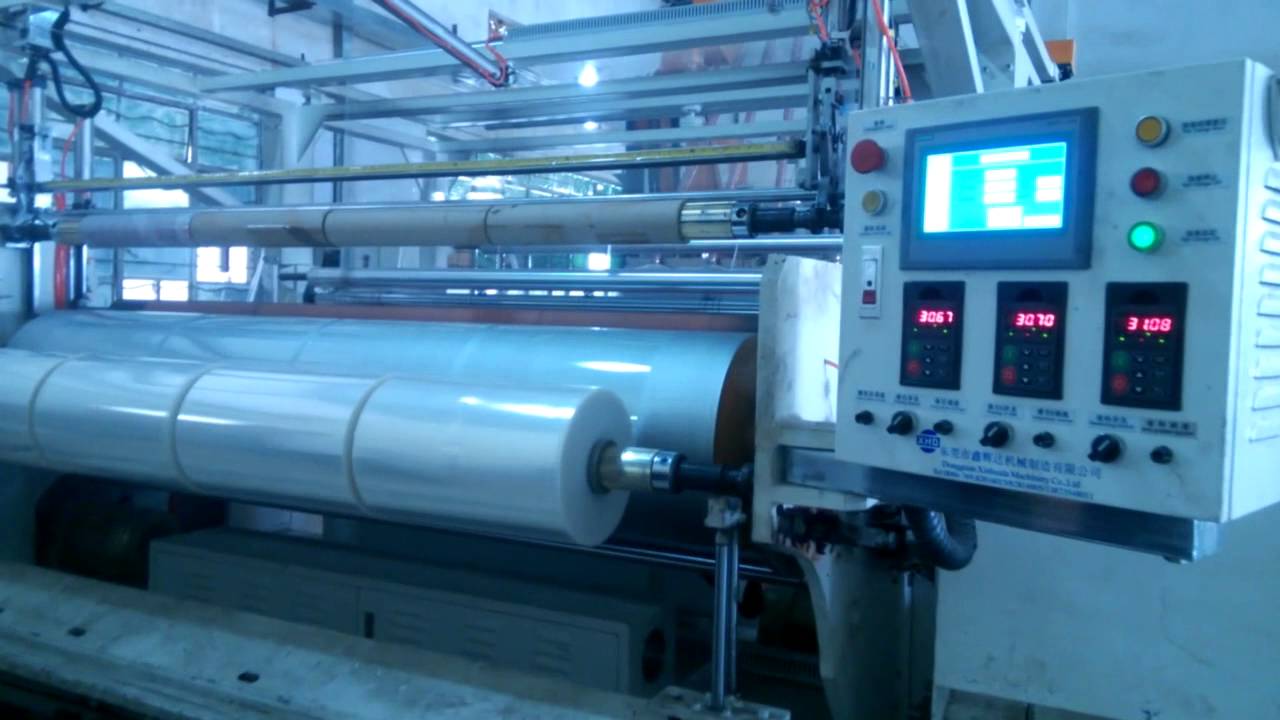
Application And Manufacturing Of Stretch Film
Stretch film, also known as stretch wrap or pallet wrap, is a highly stretchable plastic film that is wrapped around items to secure them. The elastic recovery of the film keeps the items tightly bound together. Rohit Polymer Industries Stretch wrap is commonly used to secure pallets of goods during transport and storage. There are many stretch film Manufacturers in India, the primary being Rohit polymer industries in Manesar, Gurgaon, and Haryana. Rohit Polymer Industries is also a stretch film Exporter. It can also be used to bundle smaller items together, protect items from dust and moisture, and deter tampering.
Stretch wrap is made from a variety of materials, including linear low-density polyethylene (LLDPE), which is the most common type.
LLDPE is strong, durable, and resistant to tearing and puncturing. Other materials that can be used to make stretch wrap include PVC and nylon.
Characteristics Of Stretch Film?
Here are some of the key characteristics of stretch film:
- High stretchability: As the name suggests, stretch film is designed to be stretched a significant amount (usually around 200% to 300%) without breaking. This allows it to conform to the shape of the items being wrapped and create a tight, secure hold.
- Puncture resistance: Stretch film is made from a relatively tough material that is resistant to punctures and tears. This helps to protect the items being wrapped from damage during transport or storage.
- Load stability: When applied correctly, the stretch film can create a very stable unit load. This helps to prevent the items on the pallet from shifting or tipping over during transport.
- Moisture barrier: Stretch film can provide a moisture barrier, which can help to protect the items being wrapped from water damage or spoilage.
- Cost-effective: Stretch film is a relatively inexpensive way to secure pallets and other items. It is also lightweight and easy to use, which can help to reduce labor costs.
Benefits Of Using Stretch Film For Packaging?
- Increased Product Protection: Stretch film acts as a barrier against external elements like dust, moisture, and dirt, keeping your products clean and dry. Some films even offer UV protection for outdoor storage.
- Reduced Product Damage and Increased Load Stability: By conforming tightly to the load and creating a cohesive unit, stretch film minimizes movement and shifting during transport, preventing product damage caused by collisions or falls.
- Improved Shipping and Handling: Stretch film allows for secure stacking of pallets, maximizing space utilization in warehouses and trucks. The film's ease of application also translates to faster packaging times.
- Better Inventory Control: Wrapped pallets are easily identifiable and prevent product loss or mix-ups during storage and handling.
- Cost-Effective: Stretch film is a relatively inexpensive material compared to other packaging options like straps or banding. Furthermore, it reduces wasted space and can potentially lower shipping costs.
Limitations Of Stretch Film?
- Limited Protection Against Impact and Punctures: Stretch film excels at protecting against dust, moisture, and minor bumps, but it doesn't offer significant protection against forceful impacts or sharp objects.
- Environmental Concerns: Traditionally, stretch film is made from low-density polyethylene (LDPE), a type of plastic that isn't readily biodegradable.
- Incorrect Application Issues: Stretch film relies on proper application techniques and choosing the right film type for the job.
- Temperature Sensitivity: Extreme temperatures can affect stretch film performance.
Types of stretch film?
- Machine Stretch Film: Designed for use with specialized stretch wrapping machines (automatic, semi-automatic, or turntable). These films are typically offered in larger rolls to accommodate machine applications and often prioritize efficiency and cost-effectiveness. Here are some common machine stretch film types:
- Cast Stretch Film: Produced through a cast extrusion process, resulting in a clear film ideal for applications where product visibility is important.
- Blown Stretch Film: Manufactured using a blown extrusion process, offering superior puncture resistance compared to cast film.
- Pre-stretched film: Already stretched to a specific point during production, requiring less force to achieve a secure wrap and minimizing material usage.
Hand Stretch Film: Intended for manual application, typically by hand with a dispenser or wrapper. They are offered in smaller, more manageable rolls and prioritize ease of use.
Specification Of Stretch Film?
- Thickness:
- They are measured in microns (µm) or mils (1 mil = 25.4 microns). Thicker films (typically 40-80 microns) offer greater puncture resistance and load capacity but are less economical.
- Thinner films (around 20-40 microns) are suitable for lighter loads and prioritize cost-efficiency.
- Pre-stretch Ratio:
- This indicates how much a film can be stretched before it reaches its yield point. Higher pre-stretch ratios (200% or more) allow for better load containment with less film used but require specialized application equipment.
- Lower pre-stretch ratios (around 150%) are easier to use with manual application but might require more film to achieve the same level of load security.
- Load Capacity:
- This refers to the maximum weight a stretch film can secure effectively. Manufacturers may specify load capacity based on ideal application conditions.
- Clarity:
- Stretch film can come in various transparency levels. Clear film allows for barcode scanning without unwrapping, while opaque film might be preferred for concealing contents.
- Color:
- While clear is common, colored stretch film can be used for product identification, security purposes, or to block out sunlight for UV-sensitive products.
- Additive Properties:
- Some films may be formulated with specific additives to enhance properties like puncture resistance, cling, or UV protection.
